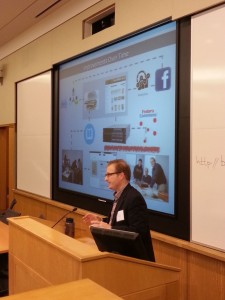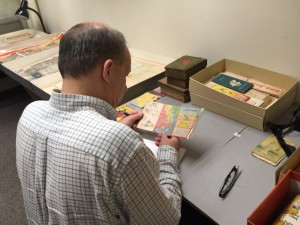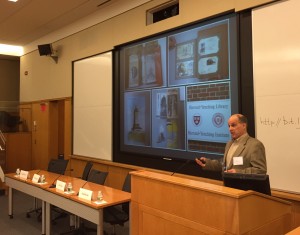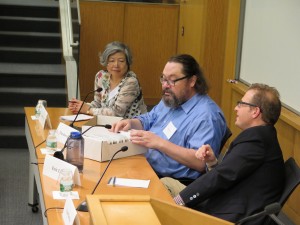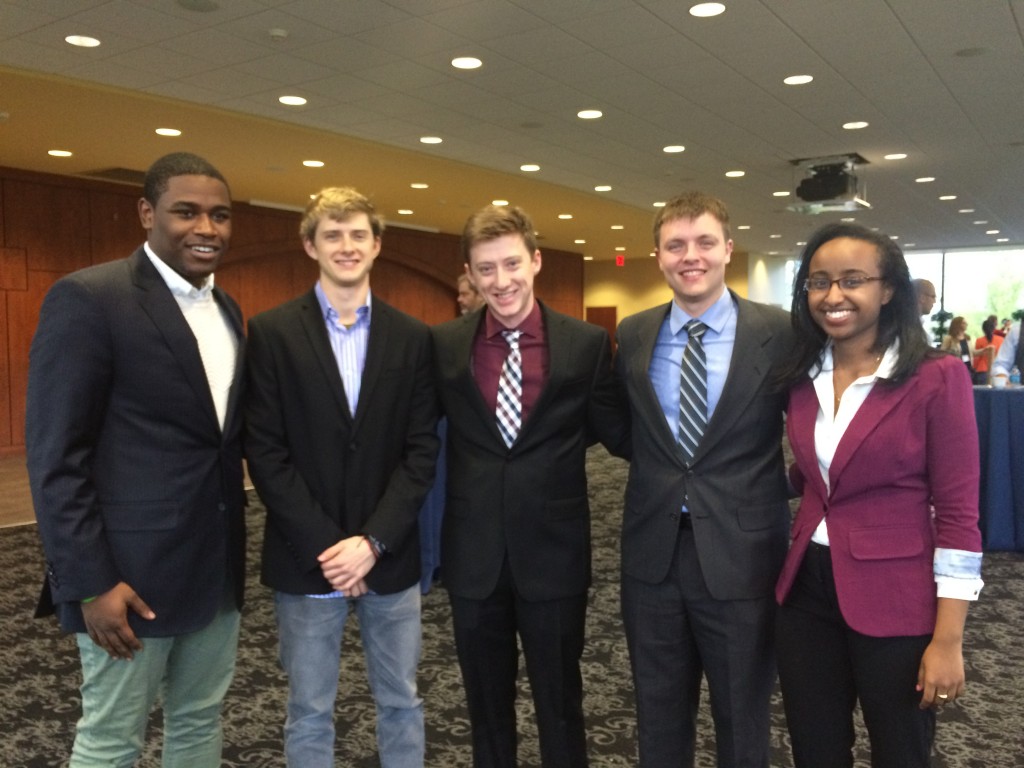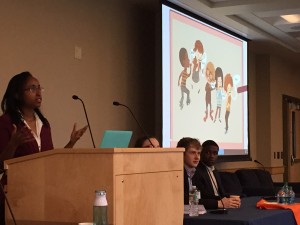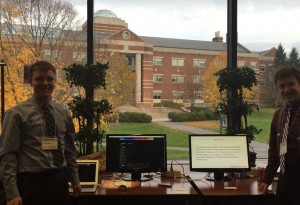History Professor Paul Barclay and Director of Digital Scholarship Services Eric Luhrs were invited to participate in a workshop on “Advancing Digital Scholarship in Japanese Studies” at the prestigious Reischauer Institute of Japanese Studies at Harvard University. Their flagship digital project, the East Asia Image Collection, served as a catalyst for discussion and as an inspiration for new digital scholarship in the field.
The impetus for the invitation was Harvard Yenching Library’s newly acquired collection of ephemera, books, and manuscripts for Japanese-governed Manchukuo (“Manchuria”). Manchukuo, a region that consisted of China’s three northeastern provinces, existed as a state from 1932-1945 and was considered the jewel in the crown of Japanese empire. The new collection includes over 2000 items, including hundreds of postcards, board games, propaganda posters, scrapbooks, and hundreds of rare books. Barclay and Luhrs were asked to help survey the materials due to their expertise with similar materials in the EAIC.
Their ten years of experience in collecting, cataloging, and building the East Asia Image Collection, an open access archive of almost 6000 postcards and historical ephemera from the Japanese Empire, have made Luhrs and Barclay a valuable resource in this scholarly arena. In the course of the project they have encountered and overcome numerous complexities in terms of digitization, representation, and managing long-term access and preservation of the digital surrogates. They are well positioned to help others negotiate these hurdles and, more importantly, create the foundations not only to build new archives and collections, but also to connect these collections across institutions.
Over the course of two days, Barclay and Luhrs met both with scholars of Japanese Studies and experts in digital scholarship to discuss best practices and strategies in creating digital scholarship projects.
During their presentation, “Growing the East Asia Image Collection over a Decade,” Director Luhrs presented on the technical, conceptual, institutional, and administrative aspects of building a world-class digital archive. Barclay explained how the EAIC has drawn volunteers, students, collaborators, and donors into the project over the years. Barclay focused on three ongoing projects in international collaboration: the Lafayette-Showa Memorial Museum (Tokyo) project to digitize, transcribe, translate, and publish postcard-letters from Japanese families to soldiers in the Philippine Islands in 1945 and 1946; a joint venture between Lafayette and the Puli Municipal Museum in Taiwan to build a digital archive for the Taroko-Japanese War of 1914, and a partnership between Kyoto University and Lafayette College to link digital archives across the Pacific Ocean.
Their second session, “From Shoebox to Online Showcase: How to build a Digital Image Collection” included fellow researchers Ted Bestor, Professor of Anthropology and Director of Harvard’s Reischauer Institute, and Kuniko McVey, Librarian of Japanese Language Materials at Yenching. Using Harvard’s new Manchukuo collection as a focus, this session was a round-table discussion of how scholars should (and shouldn’t) build digital research collections.
Finally, for the conference’s round-up session, Barclay and Luhrs moderated a discussion among thirty scholars, librarians, and technologists about the future of digital scholarship, copyright issues, and best teaching practices.
The focused nature of the conference provided the opportunity for like-minded scholars from a number of prestigious universities and institutions to share resources and solutions. Having the best and brightest of the field assembled in the same location created a unique space for a rich and productive exchange of ideas.
Barclay and Luhrs will return to Harvard in May to continue the conversation. The spring session will have a more specific focus on Harvard’s new Manchuria materials and will work to bring together the strengths of scholars and library scientists from multiple institutions in the development of a new research collection.

